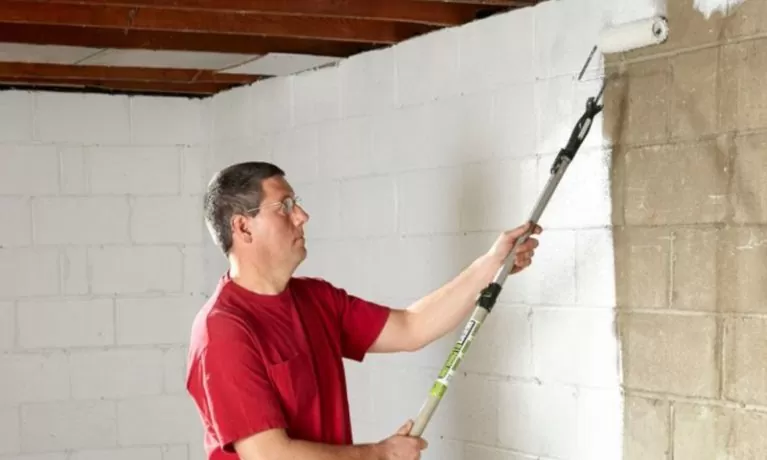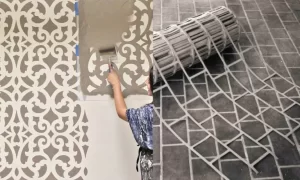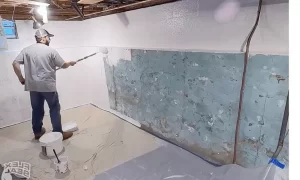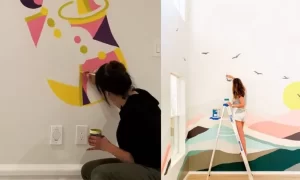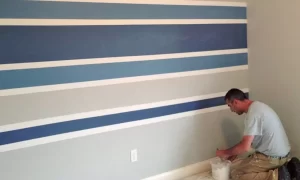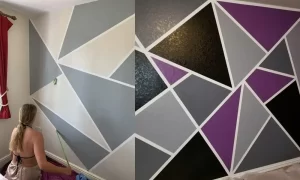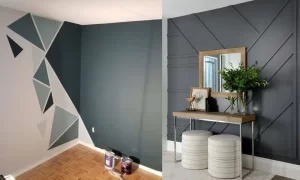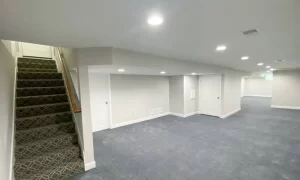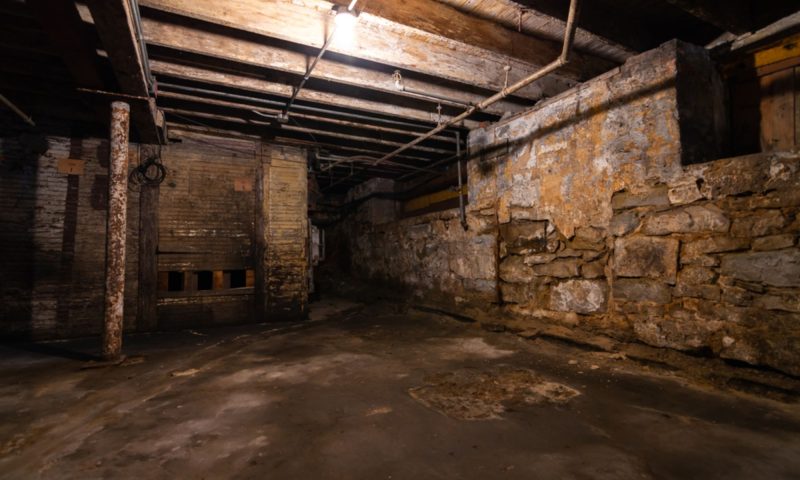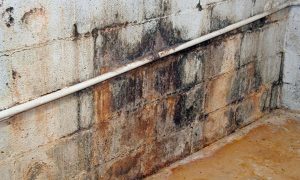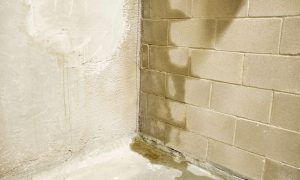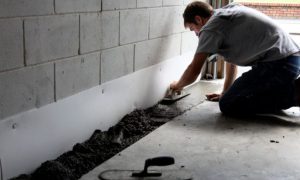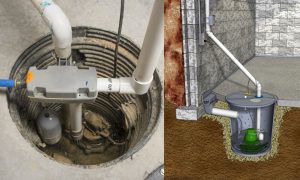Most people think of basements as cold, dark, and damp places. But with a little bit of paint, you can transform your basement into a warm and inviting space. Whether you want to create a cozy den or a home theater, painting the concrete walls is a great way to get started.
Not only will it brighten up the space, but it will also help to conceal any imperfections. Plus, painting is a relatively inexpensive way to make a big impact. So if you’re looking for a quick and easy way to transform your basement, grab a paintbrush and get started.
10 Ideas For Painting A Concrete Basement Wall:
Painting a concrete basement wall may seem like a daunting task, but with the right preparation and technique, it can be easily accomplished. Here are 10 ideas to get you started:
1. Go for a solid color
A fresh coat of paint can illuminate any space, but when it comes to painting a concrete basement wall, there are a few things to keep in mind. First of all, it’s important to choose the right color for paint.
A solid color is always a good choice for a concrete basement wall because it will provide good coverage and give the space a clean, finished look. Choose a light color if you want the space to feel bright and open, or opt for a darker shade if you’re going for a cozier feel.
Additionally, be sure to prime the surface before painting to ensure that the paint will adhere properly. With a little time and effort, you can transform your concrete basement wall into a stylish and welcoming space.
2. Use a stencil
If you’re looking for a way to add some personality to your home without breaking the bank, stenciling is a great option. Whether you want to create a focal point in your concrete basement walls or add some pattern to your kitchen backsplash, stenciling is a fun and easy way to get creative with your decor.
Plus, it’s relatively inexpensive and requires very little setup or cleanup. So what are you waiting for? Grab a stencil and some paint, and let’s get started!
3. Go for a faux finish
If you’re searching for a cheap and cheerful way to add personality to your basement without sacrificing quality, choose a faux finish! Whether you want the look of stone, brick, or wood, there’s a faux finish that can give your basement wall the appearance you desire.
Not only is painting a concrete basement wall a budget-friendly option, but it’s also surprisingly easy to do. With just a little time and effort, you can transform your space into something truly unique. So what are you waiting for? Spruce up your basement with a faux finish and give it some personality to your basement wall!
4. Paint a mural
Are you looking for a fun and classic approach to personalize your house? Why not paint a mural on one of your basement walls? murals can add interest and drama to any wall, and they’re a great way to show off your creativity. Plus, painting a mural is a relatively easy DIY project that anyone can do.
If you’re thinking about painting a mural, one of the best surfaces to work with is concrete. Concrete basement walls provide a large and smooth canvas that’s perfect for painting. Plus, concrete is durable and easy to clean, so your mural will stay looking great for years to come.
So what are you waiting for? Gather your supplies and get started on your very own concrete mural today!
5. Use chalkboard paint
Chalkboard paint is a fun and easy way to add function and style to any space. Whether you want to create a command center in your basement wall or make a playroom more fun for your kids, chalkboard paint is a great option. Plus, it’s perfect for painting a concrete basement wall because it provides good coverage and adheres well to the surface.
One thing to keep in mind when using chalkboard paint is that it can be difficult to remove if you decide you want to change things up later on. However, with a little elbow grease and some patience, you should be able to get the job done.
So go ahead and give it a try! You may be surprised at how much you enjoy painting with chalkboard paint.
6. Add some stripes
If you’re looking for a quick and easy way to add some interest to your basement wall, try painting stripes! This is a great project for beginners because it doesn’t require any complex techniques or materials. Plus, it’s a budget-friendly way to spruce up your concrete basement wall.
To paint stripes on your concrete basement wall, start by using painter’s tape to create a straight line. Then, paint over the tape with your desired color. Once the paint is dry, remove the tape and enjoy your new stripes!
7. Paint a geometric design
If you want to add a little bit of pizzazz to your space, try painting a geometric design on your concrete basement wall. This is a great project for those who are feeling a little bit more adventurous, as it requires some basic art skills. But don’t worry – if you make a mistake, you can always repaint it.
To get started, use painter’s tape to create your desired design on the wall. Then, start painting your design with your desired colors. Once you’re finished, remove the tape and enjoy your new geometric wall!
8. Paint an accent wall
If you’re looking for a way to add some drama to your concrete basement wall, consider painting an accent wall. This is a great way to make a bold statement without having to paint the entire basement. Plus, it can be completed in just a few hours.
To paint an accent wall, start by choosing the wall that you want to feature. Then, paint it with your desired color. Once the paint is dry, add some accent pieces to really make your wall pop. For example, you could hang a piece of art or add some shelving. Whatever you choose, make sure it reflects your personal style!
9. Use glow-in-the-dark paint
Glow-in-the-dark paint is a fun way to add some nighttime interest to your concrete basement wall. This type of paint is perfect for those who want to create a unique and playful space. Plus, it’s a great way to add some safety to your basement in case of a power outage.
To use glow-in-the-dark paint, start by painting your wall with a white base coat. Then, apply the glow-in-the-dark paint over top. Once the paint is dry, turn off the lights and enjoy your new illuminated space!
10. Use reflective paint
You may not have realized it, but the concrete walls in your basement could be a source of reflected light and heat. By painting them with reflective paint, you can help to keep your basement cooler in the summer and warmer in the winter.
Reflective paint also has the added benefit of reducing glare, making it easier to see in your basement. If you’re looking for a way to improve the comfort of your home and save on energy costs, reflective paint is a great option.
So next time you’re at the hardware store, pick up a can of reflective paint and give it a try. You’ll be glad you did!
Get creative!
There are no rules when it comes to painting your concrete basement wall. So go ahead and get creative! There are endless possibilities when it comes to design, so let your imagination run wild.
Whatever you choose, make sure it reflects your personal style and taste. After all, this is your space and you should enjoy looking at it every day. So have fun and don’t be afraid to experiment!
How to Prepare Concrete Basement Walls for Painting?
Whether you’re trying to increase the value of your home before selling or you’re just ready for a change, giving your basement walls a fresh coat of paint is a great way to transform the space.
But before you break out the roller and paint tray, there are a few prep steps you need to take to ensure that your project goes smoothly.
Here’s a quick guide on how to prepare concrete basement walls for painting.
- Start by giving the walls a thorough cleaning. You can do this with a mixture of water and mild detergent.
- Once the walls are clean, allow them to dry completely.
- Use a concrete patching compound to fill in any cracks or holes.
- Once the patching compound is dry, sand the entire surface to create an even surface.
- Finally, apply a primer before painting.
By taking these prep steps, you’ll be one step closer to transforming your basement into the space of your concrete basement walls.
Should You Use a Primer Before Painting a Concrete Basement Wall?
You’re staring at your blank basement walls, wondering what color to paint them. You’ve narrowed it down to a few options, but you can’t seem to make a decision. Suddenly, you remember hearing that you should use a primer before painting a concrete basement wall.
But is that really necessary?
To answer that question, it’s important to understand what primer is and what it does. Primer is a type of paint that helps to improve the appearance of the paint job and increase the durability of the paint. It can also help to protect the concrete from weathering and staining. In short, primer provides a barrier between the concrete and the paint, which can help to prolong the life of your paint job.
So should you use a primer before painting a concrete basement wall? The answer is yes! So if you’re looking for a long-lasting paint job, be sure to use primer!
Conclusion:
Painting a concrete basement wall may seem daunting, but with the right preparation and materials, it can be a relatively easy task. Our blog is packed with information on how to paint all concrete basement walls, so be sure to visit us regularly for more tips and tricks. In the meantime, here are 10 ideas for painting a concrete basement wall that will help you get started.

